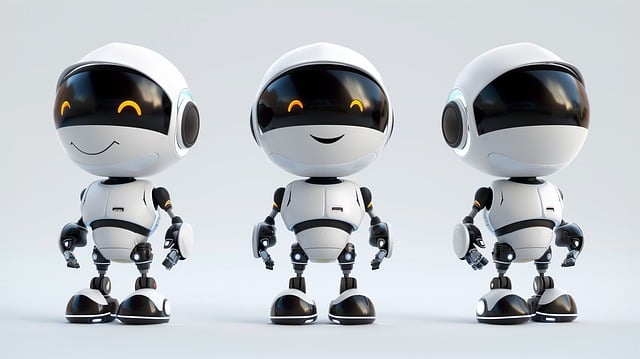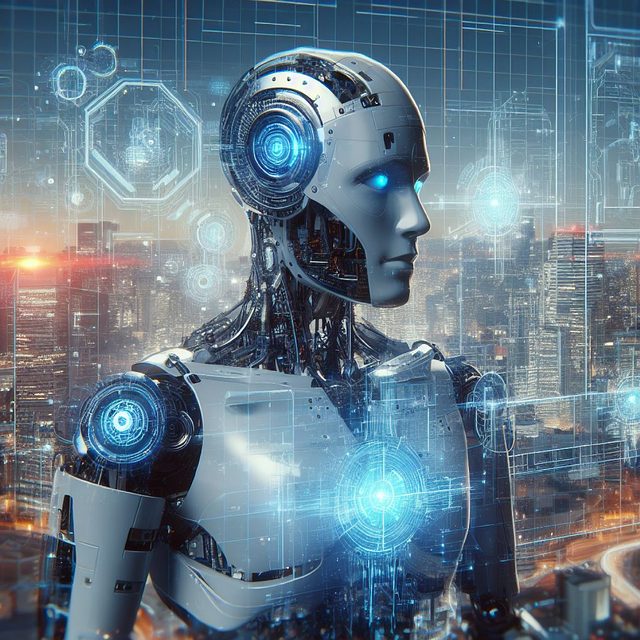Chatbot AI development hinges on a solid grasp of natural language processing (NLP), which allows these systems to understand and respond to human language with context-aware precision. Key components include parsing user input, discerning intent, identifying relevant entities, and formulating coherent responses within conversational frameworks. Effective context management, memory mechanisms like session storage, and dialogue management systems are essential for maintaining conversation relevance. Advanced chatbot AI applications provide engaging and efficient customer service interactions by leveraging machine learning models and datasets to improve accuracy and coherence of responses.
The design of a chatbot's conversation flow requires mapping out potential user interactions to ensure the experience is both seamless and intuitive, utilizing decision trees or flowcharts for clarity. Python stands out as a preferred programming language due to its user-friendly syntax and extensive machine learning library support. Integration with platforms like Dialogflow or Microsoft Bot Framework expands the chatbot's capabilities across various channels. NLP frameworks, particularly TensorFlow and PyTorch along with Hugging Face's Transformers, are pivotal for enabling human language comprehension through pre-trained models that can be fine-tuned to specific audiences.
Testing and iterative refinement are critical for achieving high performance in chatbot AI. Initial tests assess the chatbot's ability to handle diverse conversational inputs, while continuous real-world interaction data informs ongoing enhancements. A/B testing and user feedback are valuable tools for identifying successful strategies, and key performance indicators guide developers to fine-tune their chatbots for superior user satisfaction and engagement. This iterative process ensures that chatbot AI remains responsive, accurate, and user-centric in practical applications.
navigator’s guide through the intricacies of constructing a robust scripted AI chatbot. This article delves into the essentials of chatbot AI fundamentals, meticulously outlining the steps for designing a conversation flow that resonates with users. It also provides insights on selecting an optimal technology stack tailored to your project’s needs, integrating sophisticated Natural Language Processing (NLP) capabilities, and rigorously testing your chatbot for peak performance. Embark on mastering chatbot AI with this comprehensive guide, ensuring your bot becomes a standout in user engagement and satisfaction.
- Understanding Chatbot AI Fundamentals
- Designing the Conversation Flow for Your Chatbot AI
- Choosing the Right Technology Stack for Your Scripted AI Chatbot
- Implementing Natural Language Processing (NLP) in Your Chatbot AI
- Testing and Refining Your Chatbot AI for Optimal Performance
Understanding Chatbot AI Fundamentals

When embarking on the journey to build a scripted AI chatbot, one must first grasp the core principles that underpin its functionality. At the heart of every chatbot AI lies natural language processing (NLP), which allows the chatbot to understand and interpret human language. This technology has advanced significantly, enabling chatbots to parse user inputs, identify intent, extract entities, and generate appropriate responses in a conversational manner. The design process begins with defining clear use cases and understanding the scope of interactions the chatbot will handle. This involves selecting appropriate machine learning models and algorithms that can be trained on datasets rich in dialogue exchanges to ensure the chatbot responds accurately and coherently.
Furthermore, integrating chatbot AI into a system requires careful consideration of context management capabilities. The chatbot must maintain the state of the conversation and reference previous interactions to deliver relevant and contextually appropriate responses. This is achieved through a combination of memory mechanisms, such as session storage, and sophisticated dialogue management systems that orchestrate the flow of the conversation based on predefined scripts or learned patterns from training data. By mastering these chatbot AI fundamentals, developers can create effective, responsive, and human-like conversational agents tailored to a wide array of applications, enhancing user engagement and streamlining customer service operations.
Designing the Conversation Flow for Your Chatbot AI

When designing the conversation flow for your chatbot AI, it’s crucial to map out the potential interactions users may have with your bot, ensuring a seamless and intuitive experience. This involves planning the scripted responses, anticipating user queries, and structuring the dialogue in a way that feels natural and helpful. The conversation flow should be organized into a decision tree or a flowchart, which visually represents the chatbot’s logic and the various paths the conversation can take. Each node in this tree represents a point of decision or action, where the chatbot AI determines the next appropriate response based on the input received. This requires careful planning to cover a wide range of scenarios without overwhelming the bot with too many options, which could lead to confusion and errors. By prioritizing clarity and user intent, your chatbot AI can effectively guide users through their inquiries, whether they are seeking information, assistance, or simply engaging in conversation. Utilize keywords like ‘chatbot AI’ to optimize your content for search engines, ensuring that your article is discoverable by those interested in the development and application of conversational AI technologies.
Choosing the Right Technology Stack for Your Scripted AI Chatbot

When embarking on the creation of a scripted AI chatbot, selecting the appropriate technology stack is pivotal to its success. The choice of programming languages, frameworks, and tools can significantly influence the chatbot’s performance, scalability, and ease of maintenance. For instance, Python, with its rich ecosystem of libraries such as TensorFlow or PyTorch for AI-related tasks, is often favored due to its simplicity and extensive support for machine learning algorithms. Additionally, leveraging natural language processing (NLP) libraries like NLTK or spaCy can help interpret user inputs more effectively.
Moreover, the integration of a chatbot service platform, such as Dialogflow or Microsoft Bot Framework, can streamline interactions by providing pre-built integrations and management tools. These platforms often come with their own NLP capabilities and can handle various channels like web, mobile, and social media platforms. It’s crucial to consider the scalability of your chatbot; ensure that your chosen technology stack supports growth without compromising on response times or user experience. By meticulously evaluating each component within your technology stack, you can build a robust, responsive, and maintainable scripted AI chatbot that effectively engages with users across different platforms.
Implementing Natural Language Processing (NLP) in Your Chatbot AI

To infuse your chatbot with the ability to understand and process human language, integrating Natural Language Processing (NLP) is paramount. NLP equips chatbot AI with the capability to parse, interpret, and generate human language in a way that feels intuitive and natural to users. This technology enables the chatbot to recognize intent behind user queries and respond appropriately. It involves various tasks such as tokenization, part-of-speech tagging, named entity recognition, dependency parsing, sentiment analysis, and more. By leveraging advanced NLP models like BERT (Bidirectional Encoder Representations from Transformers) or GPT (Generative Pretrained Transformer), your chatbot can be trained to handle a wide array of conversational contexts with greater accuracy and less ambiguity. This results in a more engaging user experience, as the chatbot can provide relevant responses that mimic human-like conversation flows.
When developing your chatbot AI, it’s crucial to select an NLP framework that aligns with your project’s requirements. Frameworks like TensorFlow and PyTorch offer robust libraries such as Hugging Face’s Transformers, which provide pre-trained models tailored for various NLP tasks. These models can be fine-tuned with your specific datasets to enhance their performance and ensure the chatbot responds effectively to the nuances of language used by your target audience. Fine-tuning involves retraining the pre-trained model on a dataset that is representative of the kind of interactions your chatbot will have, thereby improving its understanding and response quality over time. This iterative process of training and refinement is key to building a chatbot AI that users can trust and interact with confidently.
Testing and Refining Your Chatbot AI for Optimal Performance

When constructing a scripted AI chatbot, rigorous testing and refinement are pivotal to achieving optimal performance. Initially, your chatbot AI should be subjected to a series of preliminary tests that evaluate its ability to handle a variety of conversational inputs. This phase involves setting up scenarios where the chatbot encounters diverse linguistic patterns and user intents. The goal is to identify any gaps in its responses or misunderstandings of queries, which can then be addressed. Utilizing a dataset enriched with examples that cover the gamut of potential interactions can help in this regard. By analyzing these interactions, developers can fine-tune the chatbot’s natural language processing (NLP) algorithms to improve its comprehension and reaction capabilities.
Furthermore, continuous refinement is essential to ensure your chatbot AI maintains high performance as it interacts with users over time. As real-world conversations unfold, the chatbot should be collecting data on its successes and shortcomings. This data can then be used to iterate and enhance the chatbot’s scripts, machine learning models, and decision trees. A/B testing different versions of responses or dialogue flows can reveal which approaches yield better outcomes. Additionally, incorporating user feedback mechanisms allows for direct input on the chatbot’s effectiveness, enabling developers to make targeted improvements. Monitoring key performance indicators such as user satisfaction scores, response accuracy, and interaction times will guide the iterative process, ensuring that your chatbot AI not only meets but exceeds user expectations in real-world conditions.
Crafting a scripted AI chatbot involves a strategic blend of understanding AI fundamentals, designing effective conversation flows, selecting appropriate technologies, and integrating Natural Language Processing capabilities. By meticulously following the outlined steps—from grasping the core principles of chatbot AI to rigorously testing and refining your creation—you can develop a chatbot that effectively communicates with users, enhancing user engagement and satisfaction. This guide serves as a comprehensive roadmap for those looking to enter the chatbot AI domain, ensuring your digital assistant is both functional and conversational. Implementing these strategies will position you at the forefront of leveraging AI technology for practical and engaging applications.
